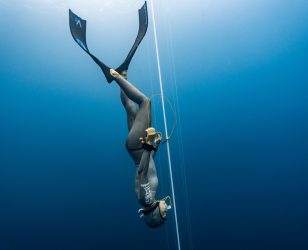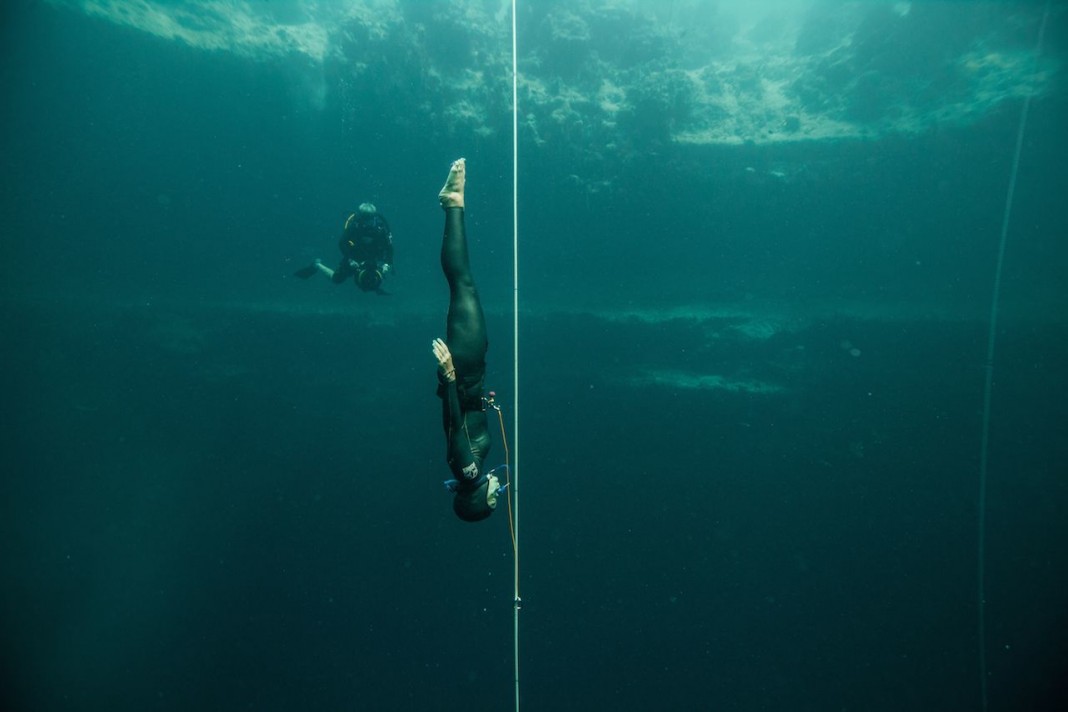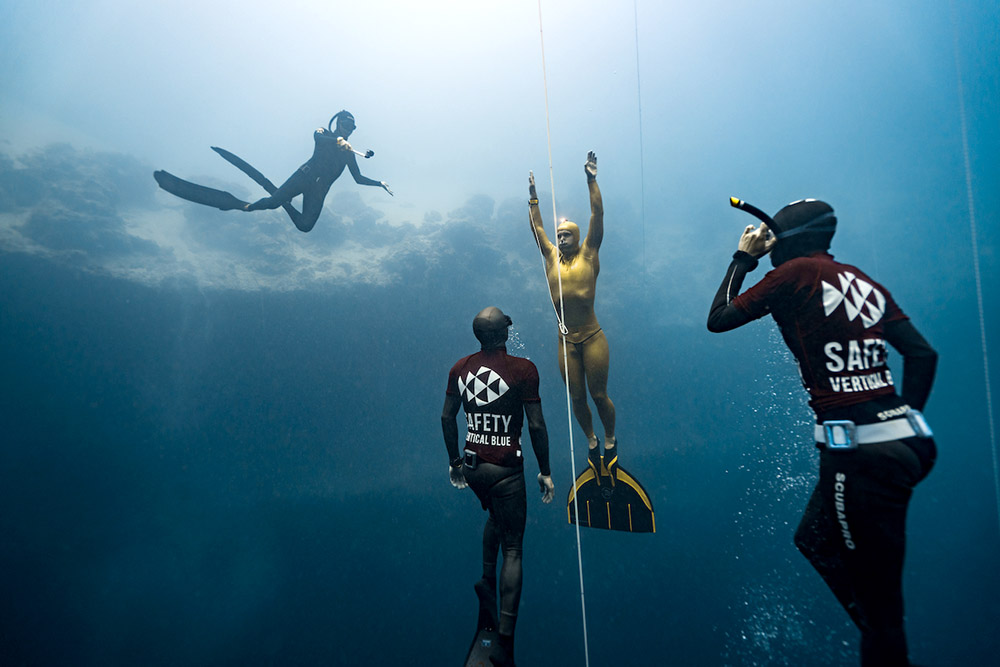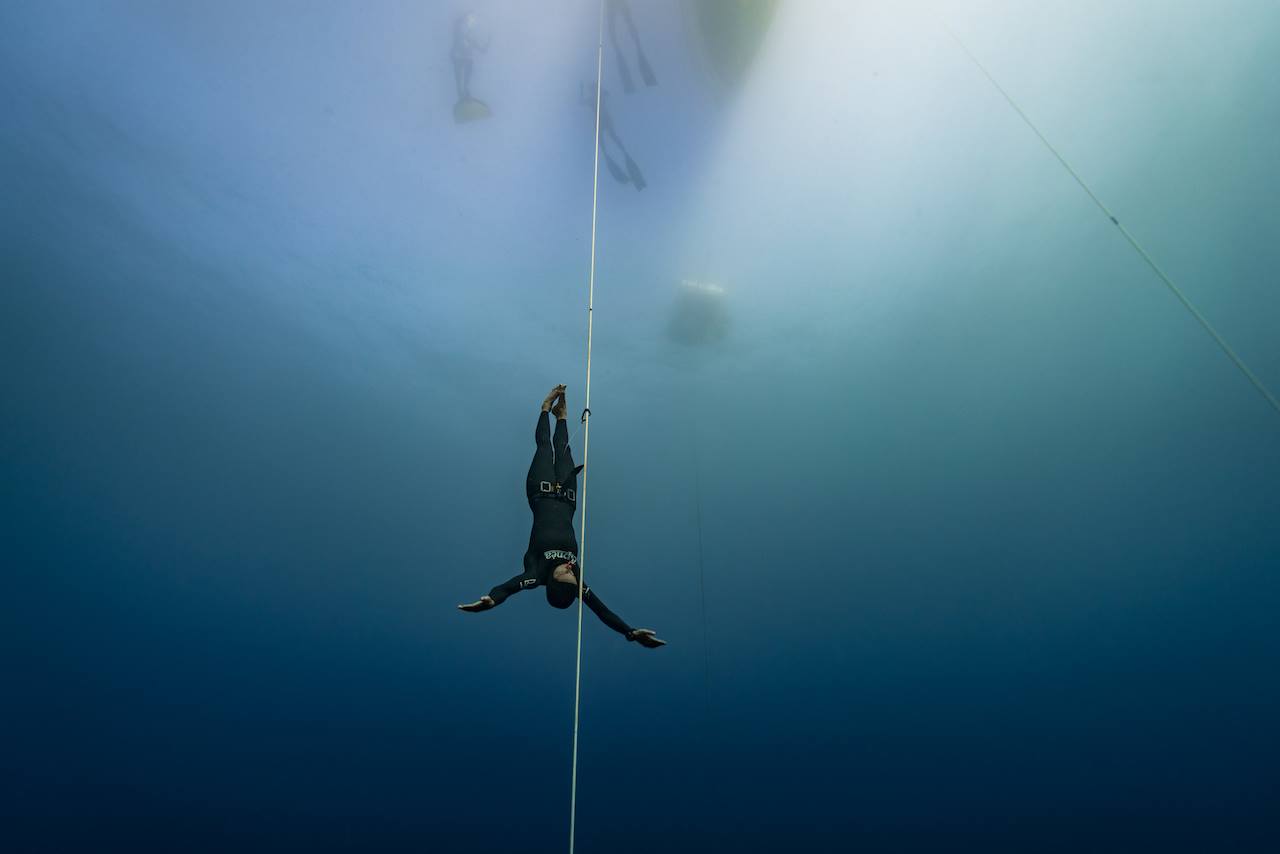 If you’re interested in a sport that drops your heart rate, shrinks your blood vessels and directs your blood away from your limbs and extremities, then freediving is the one for you. Diving as far as you can on a single breath is a popular form of aquatic sport, with 130 federations from five continents making up the Confédération Mondiale des Activités Subaquatiques (CMAS) – The World Underwater Federation.
If you’re interested in a sport that drops your heart rate, shrinks your blood vessels and directs your blood away from your limbs and extremities, then freediving is the one for you. Diving as far as you can on a single breath is a popular form of aquatic sport, with 130 federations from five continents making up the Confédération Mondiale des Activités Subaquatiques (CMAS) – The World Underwater Federation.
CMAS is the official international federation for freediving, as recognised by the International Olympic Committee, and the organisation responsible for governing World and Area Championships. Competitive freediving is an individual sport based on the best individual achievement, where all disciplines are open to both male and female competitors. Competitive disciplines can be as part of a competition or of a record attempt.
The term ‘apnea’ (or ‘apnoea’) is used to describe the suspension of breathing. In water sports the term refers to voluntary breath-holding by keeping the face below the surface of the water. In underwater sports, the term freediving is also used to refer to all aquatic activities that involve breath-holding. The terms apnea and freediving are used interchangeably but most often the term freediving is reserved to open water activities.
Depending on the freediving discipline the diver can use either a mono-fin or bi-fins or no fins at all. When fins are used, they must be powered only by the muscular power of the diver, without use of any mechanism, even if the latter is activated by the muscles. In specific bi-fins competitions no dolphin kick is allowed except in a 3 meter zone at the start and turning points.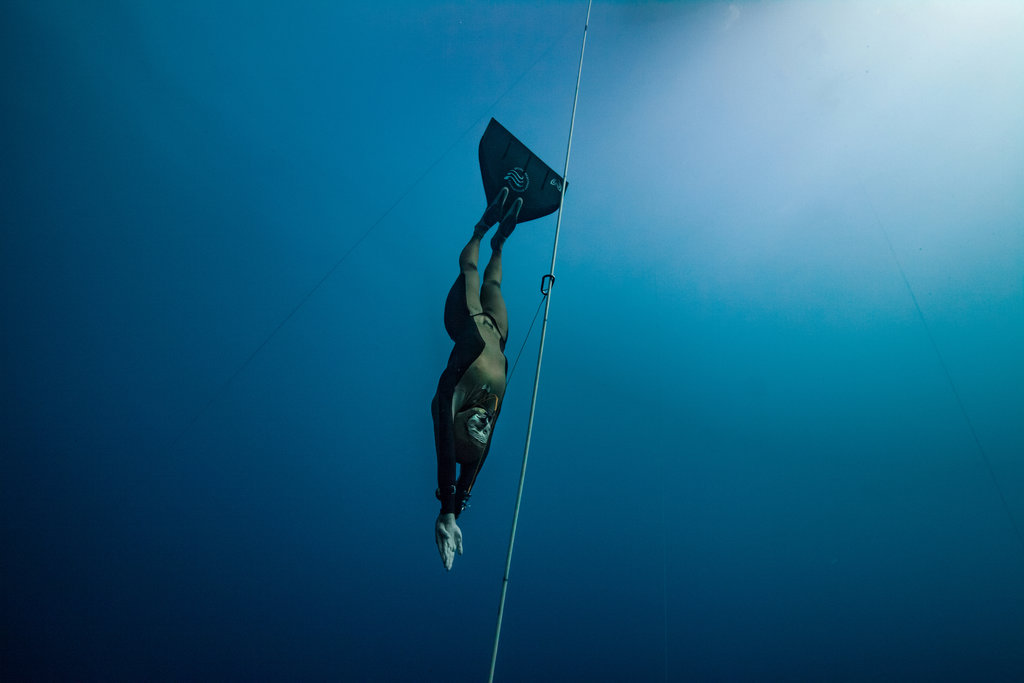
Under diving conditions, the human body will make certain physiological adaptations which stem from the mammalian diving reflex — a set of physiological responses to immersion that overrides the basic homeostatic reflexes. These adaptations enable the human body to endure depths and lack of oxygen far beyond what would have been possible without the reflex.
Competitive freedivers know how to use their bodies’ diving capabilities to go more than 200 meters underwater on a single breath. They have developed their diving reflexes to aid in conserving oxygen and restrict the flow of blood to the extremities. That way they are able to conserve the oxygen for their vital organs.
At the recent CMAS Freediving World Championships in Kas, Turkey, Ukrainian freediver Nataliia Zharkova set two new world records. On Day 3 of the competition she dived to a depth of 70 metres in the Constant Weight No-Fins (CNF) category. A dive that saw her share the world record and gold medal with Italian diver Alessia Zecchini, who also recorded the same distance.
Freediving requires the competitor to dive as far as they can on a single breath. In the CNF category the diver wears a wetsuit and a small amount of weight without any type of fin. The diver uses muscle strength to propel them downwards and back up again, and CNF is generally regarded as the most difficult discipline from a sporting perspective.
On Day 4 Zharkova dived to 89 metres in Constant Weight Bi-Fins (CWT BF) category, setting another world record while taking the gold medal. The CWT disciplines are among the most common versions of freediving to a depth. The diver descends by using either bi-fins or a mono-fin and typically a wetsuit and a small amount of weight.
In the male Constant Weight (CWT) category, Russian World Champion Alexey Molchanov, also set a new world record during his 123-meter gold medal winning dive. And in doing so he added to his International Association for the Development of Apnea (AIDA) world record, which was an incredible 129 meters set in 2016 in Baja, Mexico.
Away from the competitive arena, freediving is a recreational sport recognised for it’s relaxing and liberating properties. Like other water sports, freediving has beneficial and therapeutic properties. British freediver, Helena Bourdillon, recently talked about her battle with depression and how freediving helped her cope with the illness.
However, without proper training and supervision, freediving can be a dangerous pastime. To maximise the safety and comfort of participants CMAS has created freediving training programs and courses all over the world. If you’re ready to take the plunge visit www.cmas.org or www.aaidainternational.org for more details.
Words: Ian McHarg
Images: ©Daan Verhoeven, Sportalsub.net
Sources:
The World Underwater Federation
International Association for the Development of Apnea
DeeperBlue.com

